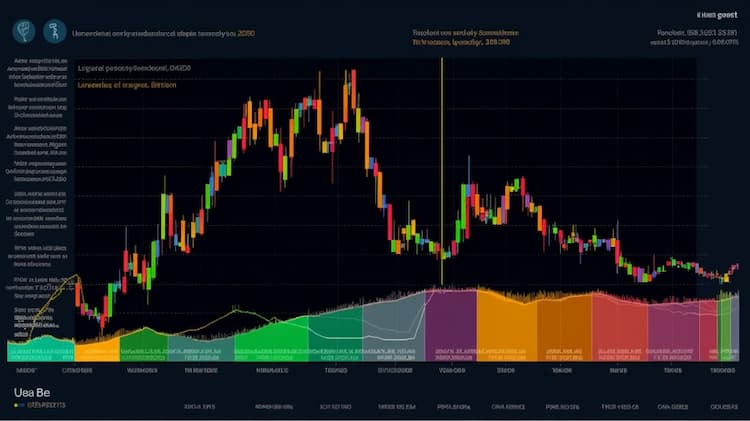
How does the GEMD ETF work?
The GEMD ETF is a specialized investment fund that focuses on a specific sector. This exchange-traded fund offers investors exposure to a range of companies in this sector.
The Goldman Sachs Fund, seeking to achieve its investment objective primarily through adherence to its underlying index, focuses on investing at least 80% of its assets in emerging market government and quasi-government bonds denominated in U.S. dollars. This strategy, reflecting a blend of investment-grade and high-yield securities, entails adherence to specific liquidity, governance, and fundamental screening criteria as established by the Index Provider, FTSE Fixed Income LLC, in collaboration with Goldman Sachs Asset Management, L.P. With 548 constituents as of November 30, 2023, and a weighted average maturity of 11.97 years, the index aims to mirror the performance of its reference, the FTSE Emerging Markets Broad Bond Index, employing a two-step methodology. The first step involves defining a Universe of potential index constituents, while the second step applies governance and fundamental screens, excluding bottom-ranked issuers. Regular rebalancing, both monthly and quarterly, ensures alignment with evolving market conditions and index criteria. Geographically diverse, the index spans 39 emerging market countries, primarily in Africa, Asia, the Middle East, Eastern and Central Europe, and Central and South America, with a dynamic composition subject to change over time. Notably, the index includes non-investment grade fixed income securities, necessitating a representative sampling strategy by the Investment Adviser to manage the fund effectively. Additionally, the fund may concentrate investments in specific sectors or industries as dictated by the concentration of the index.
The dividends for the GEMD issuer, Goldman Sachs Fund, are determined by the performance of its underlying index, which primarily consists of emerging market government and quasi-government bonds denominated in U.S. dollars. As the fund seeks to mirror the index's performance, dividends are influenced by the income generated from the securities held within the portfolio. This income typically comes from the interest payments on the bonds held by the fund. Given the diverse nature of the index constituents spanning multiple emerging market countries and regions, the dividends provided by the fund reflect the yields generated by the underlying bonds, subject to market conditions and changes in interest rates. Additionally, the fund's investment strategy, which includes a representative sampling approach to manage the portfolio efficiently, may affect the dividend yield received by investors. Overall, the dividends offered by the GEMD issuer are a result of the income generated from its holdings of emerging market bonds, tailored to align with the investment objectives of the fund and the performance of its underlying index.
The tracking performance of GEMD issuer, the Goldman Sachs Fund, is intricately tied to its ability to replicate the movements of its underlying index, which predominantly comprises emerging market government and quasi-government bonds denominated in U.S. dollars. Given the fund's investment objective of closely tracking the index, its success is contingent upon the effectiveness of its investment strategy, which involves investing at least 80% of its assets in securities included in the index. Utilizing a representative sampling strategy, the fund aims to mirror the investment profile, governance characteristics, fundamental attributes, and liquidity measures of the index constituents. Regular rebalancing, both monthly and quarterly, ensures alignment with the evolving composition and criteria of the index. Furthermore, the fund's performance is influenced by factors such as changes in interest rates, credit quality of the underlying bonds, and market conditions in emerging market countries. Therefore, the tracking performance of GEMD hinges on its ability to accurately replicate the returns of its underlying index over time, providing investors with exposure to the emerging market bond segment while minimizing tracking error.
The correlation of GEMD, represented by the Goldman Sachs Fund, with its underlying index is a crucial aspect for investors seeking to understand its performance relative to market movements. As the fund primarily invests in emerging market government and quasi-government bonds denominated in U.S. dollars to mirror the composition of its index, its correlation is expected to be high. The fund's investment strategy aims to closely track the index by investing at least 80% of its assets in securities included in the benchmark. Additionally, the fund employs a representative sampling strategy to manage the portfolio effectively, further aligning its investment profile with that of the index. Therefore, movements in the index are likely to be reflected in the performance of GEMD, making its correlation with the benchmark a key consideration for investors assessing its suitability within their portfolios. However, it's important to note that other factors such as interest rate changes, credit quality shifts, and market dynamics in emerging market countries may also impact the fund's correlation with its underlying index over time.
As an issuer, the Goldman Sachs Fund (GEMD) doesn't adhere to traditional sector allocations like equity funds, as it primarily focuses on investing in emerging market government and quasi-government bonds denominated in U.S. dollars. However, the composition of the fund's portfolio may indirectly reflect sector exposures based on the industries and sectors prevalent in the emerging market countries represented within its holdings. For instance, bonds issued by governments or quasi-government entities may come from sectors such as energy, finance, telecommunications, or infrastructure, depending on the economic structure of the issuing country. Consequently, while GEMD doesn't concentrate on specific sectors like equity funds, its holdings may still provide exposure to various industries across emerging market economies, potentially impacting its risk and return profile based on sector-specific developments within those countries.
GEMD, represented by the Goldman Sachs Fund, offers investors exposure to the emerging market government and quasi-government bond segment denominated in U.S. dollars. With a primary investment objective of closely tracking its underlying index, GEMD provides exposure to a diversified portfolio of bonds issued by emerging market countries. This exposure spans various regions, including but not limited to Africa, Asia, the Middle East, Eastern and Central Europe, and Central and South America. The fund's holdings encompass both investment-grade and high-yield securities, reflecting the breadth of opportunities within emerging market debt markets. Through regular rebalancing and adherence to specific liquidity, governance, and fundamental screening criteria, GEMD aims to provide investors with a balanced exposure to emerging market bonds while managing risks associated with credit quality, interest rate fluctuations, and geopolitical factors prevalent in these regions.

ETF Insider is a data-driven portfolio analytics and optimization platform that introduces a more efficient and practical way to visualize, analyze and optimize portfolios.
Rather than focusing on the surface-level attributes of ETFs and Mutual Funds, ETF Insider goes deeper by examining the underlying holdings of exchange traded products.
By organizing and structuring that data, investors can easily navigate within their overlapping layers.
This innovative perspective combined with modern data visualization and modeling tools, provides an entirely new approach to portfolio optimization that can quickly expose both portfolio inefficiencies and opportunities.

The GEMD ETF is a specialized investment fund that focuses on a specific sector. This exchange-traded fund offers investors exposure to a range of companies in this sector.

Discover the world of ETFs and unravel the mysteries behind CNBS ETF in this insightful article. Learn about the benefits and potential opportunities that this unique investment vehicle offers to investors.

The BOB ETF is a specialized investment fund that focuses on a specific sector. This exchange-traded fund offers investors exposure to a range of companies in this sector.
ETF Insider is a novel portfolio optimization tool that uses the power of data visualization to gain insight into portfolio compositions, concentration risks, portfolio efficiency and more. Complex financial data can be transformed into visually appealing and easily digestible graphs and charts, allowing investors to quickly identify trends and make well-informed investment decisions. Not only does this save time, but it also increases the accuracy and effectiveness of portfolio management.